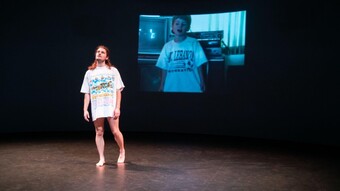As theatre around the world finds its footing four years after the onset of the COVID pandemic, many artists are refusing to return to prior industry standards—be they related to work schedules, the subscriber model, or the very setting in which plays are taking place. Digital theatre has become a mainstay for many companies that previously created only in-person shows, offering another forum for audience members—some of whom may not feel safe or comfortable attending in-person gatherings—to partake in theatregoing. A pre-pandemic study by The Arts Council of England, published in 2016, cites that digital theatregoers are in fact more likely to attend live cultural performances more frequently than the average theatre attendee. Even before the massive adaptation and acquisition of new skills that the pandemic wrought, digital theatre was an extension of and an enhancement to our theatre landscape. We are just beginning to see the ripple effects of the increased access to live performance that digital and hybrid theatre provide, but the lower barriers to entry of more affordable tickets and more flexible performance times are a welcome result.
While the increased access digital theatre offers is certainly a boon to audiences and the arts, a greater possibility of connectivity doesn’t necessarily yield closer relationships. This disparity is poignantly felt across generations. As technology changes with increased rapidity, it can become increasingly difficult to find common ground for comfortable self-expression. Although the awkwardness of puberty or the agony of first heartbreak might strike a universal chord, the social context for these experiences has changed vastly over the past century, largely due to the double life we lead on the internet. Generational wisdom can slip through the cracks or get lost in translation if there’s no longer a common interface for those conversations. To confront these questions, a pair of theatremakers in Florence, Italy are devising a new work of documentary theatre that attempts to bridge the digital divide and invite generations of women into conversation on how to better connect.
Beatriz Cabur is a theatre director, playwright, and educator with over twenty years of experience making digital theatre. Giulia Cavallini is a director, actor, psychologist, and Gestalt psychotherapist who has helmed the Teatro Immersivo Firenze since 2019. Cabur met Cavallini soon after moving to Florence, Italy, in 2022, and the two bonded over their interest in telling contemporary, impactful, feminist stories. Their first collaboration to date is The < 3 G E N Project, a hybrid (digital-physical), immersive, and interactive performance, which explores the digital distance between members of the same family. Specifically, this documentary-style show will gather interviews with women who identify as grandmothers, mothers, and daughters, and craft characters from their responses as a means to explore the contemporary nature of these intergenerational relationships.















Comments
The article is just the start of the conversation—we want to know what you think about this subject, too! HowlRound is a space for knowledge-sharing, and we welcome spirited, thoughtful, and on-topic dialogue. Find our full comments policy here